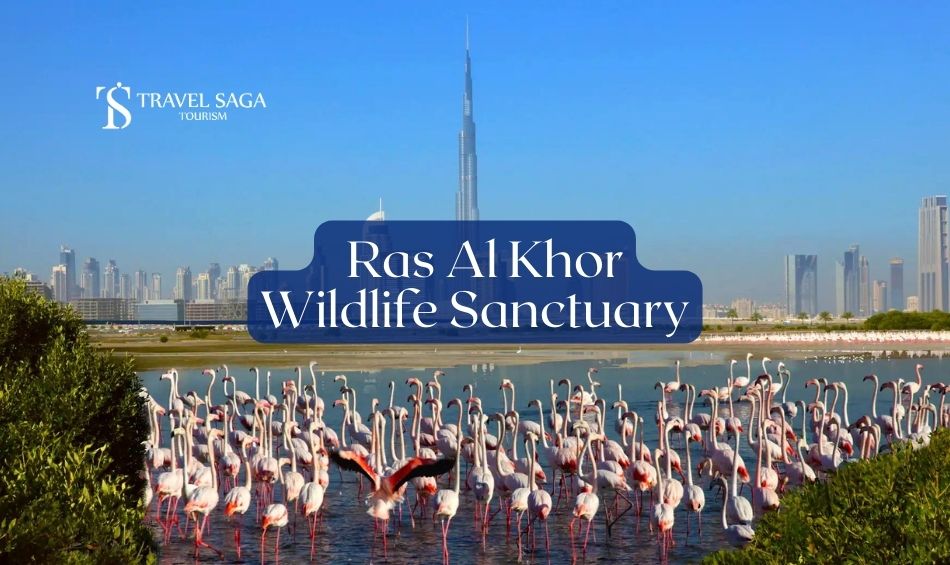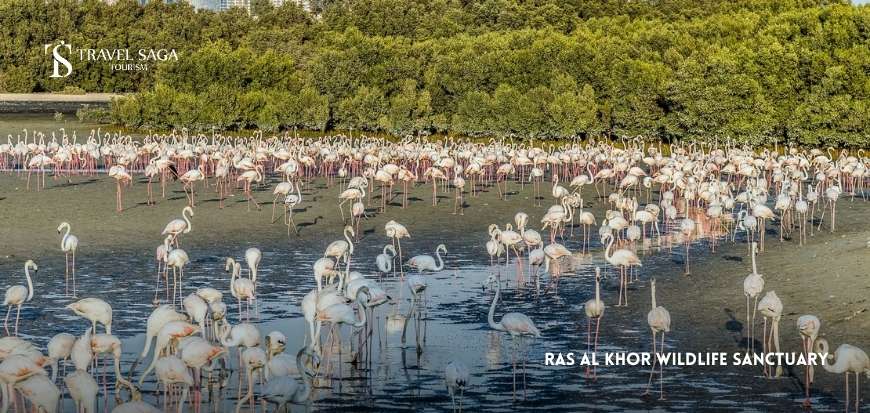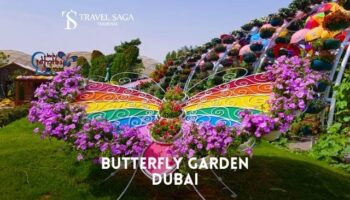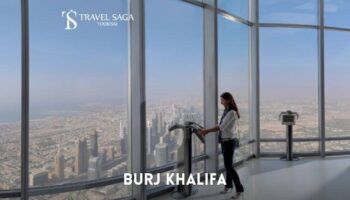Ras Al Khor Wildlife Sanctuary

The bustling megalopolis of Dubai attracts millions of tourists from all over the world. A large number of human-made attractions– skyscrapers, shopping malls, and amusement parks act as major attractions for tourists of all ages.
However, there are several natural attractions here too that are big crowd-pullers. One such attraction is the Ras Al Khor Wildlife Sanctuary. It’s indeed interesting, and also surprising, that such an expansive sanctuary can thrive such a short distance away from the huge city. Stretching for over 600 hectares, the mangrove-filled ecosystem is home to a huge number of avian species.
Things to See at Ras Al Khor Wildlife Sanctuary
Get those binoculars ready as you are about to witness a riot of colours at the sanctuary. Located at Dubai Creek, the sanctuary is strategically fenced off to protect wildlife from unwelcome human intervention. The birds hide here to allow visitors to see the birds up close while not disturbing the sanctity of the avian habitats.
The Dubai government has taken extensive steps to protect this wetland of environmental importance. Among the most critical and productive global ecosystems, wetlands support high biodiversity, store greenhouse gases, provide clean water, and maintain ideal living conditions for an array of flora & fauna.
Over 25,000 birds of more than 200 species make the lagoons, mudflats, and sanctuary their home, creating a paradise for nature & bird lovers, researchers, biologists, photographers, and environmentalists. The dazzling assortment of colourful birds is led by the majestic pink flamingos in the winter months. They enhance the visual splendour of the location and manifold the grace & poise. Don’t forget to check out Butterfly Garden in Dubai which is dedicated to butterflies, and the perfect destination for kids and nature lovers.
Various other migratory birds can also be seen here in the winter months. Some other bird species that would welcome you here are cormorants, grey herons, black-winged stilts, osprey, sandpipers, ducks, mallards, songbirds, and great egrets, among others. Some bird species like the Socotra Cormorant, Ferruginous Ducks and Social Lapwing are also to be found here. These species feature on the IUCN Red List of Endangered Species. You can also see a similar wildlife sanctuary at Sharjah Safari Park, where you can see different types of animals.
About
Birds are not the only fauna here. You would also catch a glimpse of crustaceans, fish, and some other small mammals. In fact, over 13 mammal & 14 reptile species have also made this sanctuary their home, creating a thriving biodiversity zone. More than 50 variants of fish are also to be seen. You can also get a glimpse of close to 50 types of flora here.
And Ras Al Khor is not just about bird watching or viewing biodiversity. You can also get to know a lot about the native species here from the highly knowledgeable staff members. Many schools take their students for a visit here where they can learn a lot about the conservation of flora & fauna and the latter’s life cycle. Events like World Wetlands Day and World Migratory Bird Day are organised to create such awareness & learning opportunities.
The Ras Al Khor Wildlife Sanctuary has a lot of cultural significance for the locals as well. It’s a part of Dubai’s traditional heritage. Being a key fish spawning area, this sanctuary was an important site for the traditional fishing activity that supported a fair section of the traditional Emirati population here. In fact, the settlements of Bur Dubai, Deira, and Shindaga came up in the 18th century, based entirely on this fishing activity.
Best Time to Visit Ras Al Khor Wildlife Sanctuary

The sanctuary is open to the public all year round. However, it would be more comfortable for you to visit it in the winter months (November to March). Apart from getting a chance to see the magnificent flamingoes & other migratory birds, the weather would be far more equitable so that you can plan a visit even during mid-day or afternoon.
Ras Al Khor Wildlife Sanctuary Timings
- October to March: 7:30 A.M. – 5:30 P.M.
- April to September: 6:00 A.M. – 6:00 P.M.
- Timings during the Holy month of Ramadan: 8:00 A.M. to 4:00 P.M.
Ras Al Khor Wildlife Sanctuary Entry Fees
- Entry to the sanctuary is free of cost.
How to Reach Ras Al Khor Wildlife Sanctuary?
- You can take a cab or rent a car and reach the sanctuary. It’s very easy to reach and your car’s GPS will guide you perfectly.
- If you want to avail of the Dubai Metro, then you need to take the Green Line metro & reach Dubai Creek station. From there, it’s hardly a 10-minutes taxi ride to the sanctuary.
Points to Remember While You Are in the Sanctuary
- Do not proceed beyond the “No Entry’ signs at any place in the sanctuary.
- The following activities are prohibited in the sanctuary:
- Taking your pet/s with you
- Parking your car outside the zones designated for the same
- Hunting or anyhow damaging the wildlife and/or the vegetation in the sanctuary
- Collecting animals and/or plant species from the sanctuary
- Making loud noise inside the sanctuary
- Eating, smoking and consumption of alcohol/any other intoxicant inside the sanctuary
- Sitting on the window plank
- At a time, not more than 15 people are allowed inside the hide
- There are more very beautiful Natural Spots Around Dubai that one can visit.
Conclusion
So, get your phones and connect with Travel Saga Tourism to book your tour of this beautiful sanctuary in UAE. Spend some time with nature here at Ras Al Khor wildlife sanctuary. Your stay in Dubai and transportation services, everything will be guided by Travel Saga Tourism in the best way possible. So, don’t keep waiting, visit our website and book your tour.












